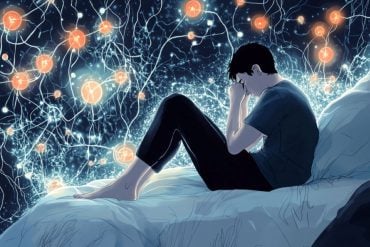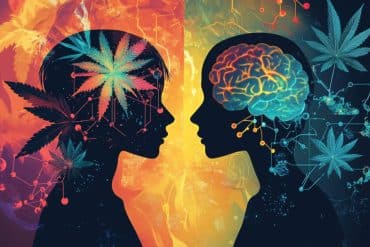Summary: Researchers have unearthed the genetic connection between the heart and brain related to fainting spells. By viewing the heart as a sensory organ sending signals to the brain, they revealed insights into the neural connections.
The study centered on the Bezold-Jarisch reflex (BJR) and the nodose ganglia within the vagus nerves. Findings may pave the way for targeted treatments for conditions associated with fainting.
Key Facts:
- The researchers identified the heart’s role in sending signals back to the brain, impacting brain function.
- They investigated the genetics behind the nodose ganglia and discovered the link of VSNs expressing the neuropeptide Y receptor Y2 (NPY2R) to BJR responses.
- Activation of NPY2R VSNs in mice led to fainting episodes, demonstrating a direct correlation between these neurons and the well-documented Bezold-Jarisch reflex.
Source: UCSD
Nearly 40 percent of people experience syncope, or fainting spells, at least once in their lives. These brief losses of consciousness, whether brought by pain, fear, heat, hyperventilation or other causes, account for a significant portion of hospital emergency room visits. Yet the exact root mechanisms at play when people “pass out” largely have remained a mystery.
Publishing a new report in Nature, University of California San Diego researchers, along with colleagues at The Scripps Research Institute and other institutions, have for the first time identified the genetic pathway between the heart and brain tied to fainting.
One of their unique approaches was to think of the heart as a sensory organ rather than the longstanding viewpoint that the brain sends out signals and the heart simply follows directions. School of Biological Sciences Assistant Professor Vineet Augustine, the paper’s senior author, applies a variety of approaches to better understand these neural connections between the heart and brain.
“What we are finding is that the heart also sends signals back to the brain, which can change brain function,” said Augustine. Information resulting from the study could be relevant to better understanding and treating various psychiatric and neurological disorders linked with brain-heart connections, the researchers note in their paper.
“Our study is the first comprehensive demonstration of a genetically defined cardiac reflex, which faithfully recapitulates characteristics of human syncope at physiological, behavioral and neural network levels.”
Augustine, along with Biological Sciences Staff Research Associate Jonathan Lovelace and Graduate Student Jingrui Ma, the first authors of the paper, and their colleagues studied neural mechanisms related to Bezold-Jarisch reflex (BJR), a cardiac reflex first described in 1867.
For decades researchers have hypothesized that the BJR, which features reduced heart rate, blood pressure and breathing, may be associated with fainting. But information lacked in proving the idea since the neural pathways involved in the reflex were not well known.
The researchers focused on the genetics behind a sensory cluster known as the nodose ganglia, which are part of the vagus nerves that carry signals between the brain and visceral organs, including the heart.
Specifically, vagal sensory neurons, or VSNs, project signals to the brainstem and are thought to be associated with BJR and fainting. In their search for a novel neural pathway they discovered that VSNs expressing the neuropeptide Y receptor Y2 (known as NPY2R) are tightly linked to the well-known BJR responses.
Studying this pathway in mice, the researchers were surprised to find that when they proactively triggered NPY2R VSNs using optogenetics, a method of stimulating and controlling neurons, mice that had been freely moving about immediately fainted.
During these episodes they recorded from thousands of neurons in the brains of the mice, as well as heart activity and changes in facial features including pupil diameter and whisking.
They also employed machine learning in several ways to analyze the data and pinpoint features of interest. Once NPY2R neurons were activated, they found, mice exhibited rapid pupil dilation and the classic “eye-roll” seen during human fainting, as well as suppressed heart-rate, blood pressure and breathing rate.
They also measured reduced blood flow to the brain, an area of collaboration with Professor David Kleinfeld’s laboratory in the UC San Diego Departments of Neurobiology and Physics.
“We were blown away when we saw how their eyes rolled back around the same time as brain activity rapidly dropped,” the researchers reported in a paper summary. “Then, after a few seconds, brain activity and movement returned. This was our eureka moment.”
Further testing showed that when NPY2R VSNs were removed from mice, the BJR and fainting conditions vanished. Previous studies had shown that fainting is caused by a reduction in brain blood flow, which the new study also found to be true, but the new evidence indicated that brain activity itself could be playing an important role.
The findings therefore implicate the activation of the newly genetically identified VSNs and their neural pathways not only with BJR, but more centrally in overall animal physiology, certain brain networks and even behavior.
Such findings were difficult to tease out previously because neuroscientists study the brain and cardiologists study the heart, but many do so in isolation of the other. “Neuroscientists traditionally think the body just follows the brain, but now it is becoming very clear that the body sends signals to the brain and then the brain changes function,” said Augustine.
As a result of their findings, the researchers would like to continue tracking the precise conditions under which vagal sensory neurons are triggered into action.
“We also hope to more closely examine cerebral blood flow and neural pathways in the brain during the moment of syncope, to better understand this common but mysterious condition,” they note.
They also hope to use their research as a model to develop targeted treatments for fainting-associated conditions.
The coauthors of the Nature paper include: Jonathan Lovelace, Jingrui Ma, Saurabh Yadav, Karishma Chhabria, Hanbing Shen, Zhengyuan Pang, Tianbo Qi, Ruchi Sehgal, Yunxiao Zhang, Tushar Bali, Thomas Vaissiere, Shawn Tan, Yuejia Liu, Gavin Rumbaugh, Li Ye, David Kleinfeld, Carsen Stringer and Vineet Augustine.
About this genetics research news
Author: Mario Aguilera
Source: UCSD
Contact: Mario Aguilera – UCSD
Image: The image is credited to Neuroscience News
Original Research: Open access.
“Vagal sensory neurons mediate the Bezold–Jarisch reflex and induce syncope” by Vineet Augustine et al. Nature
Abstract
Vagal sensory neurons mediate the Bezold–Jarisch reflex and induce syncope
Visceral sensory pathways mediate homeostatic reflexes, the dysfunction of which leads to many neurological disorders. The Bezold–Jarisch reflex (BJR), first described in 1867, is a cardioinhibitory reflex that is speculated to be mediated by vagal sensory neurons (VSNs) that also triggers syncope. However, the molecular identity, anatomical organization, physiological characteristics and behavioural influence of cardiac VSNs remain mostly unknown.
Here we leveraged single-cell RNA-sequencing data and HYBRiD tissue clearing to show that VSNs that express neuropeptide Y receptor Y2 (NPY2R) predominately connect the heart ventricular wall to the area postrema. Optogenetic activation of NPY2R VSNs elicits the classic triad of BJR responses—hypotension, bradycardia and suppressed respiration—and causes an animal to faint.
Photostimulation during high-resolution echocardiography and laser Doppler flowmetry with behavioural observation revealed a range of phenotypes reflected in clinical syncope, including reduced cardiac output, cerebral hypoperfusion, pupil dilation and eye-roll.
Large-scale Neuropixels brain recordings and machine-learning-based modelling showed that this manipulation causes the suppression of activity across a large distributed neuronal population that is not explained by changes in spontaneous behavioural movements.
Additionally, bidirectional manipulation of the periventricular zone had a push–pull effect, with inhibition leading to longer syncope periods and activation inducing arousal. Finally, ablating NPY2R VSNs specifically abolished the BJR.
Combined, these results demonstrate a genetically defined cardiac reflex that recapitulates characteristics of human syncope at physiological, behavioural and neural network levels.







